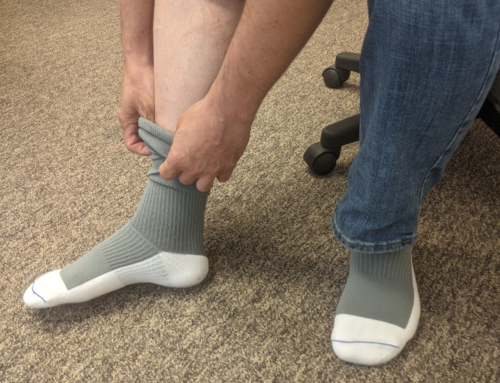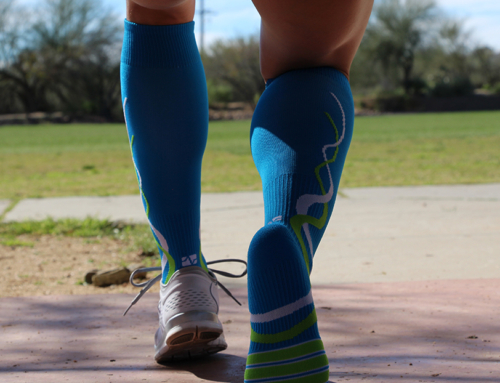Yes, compression socks can be beneficial for recovery, especially after strenuous physical activity or certain types of injuries. Compression socks from Sox Solution all have medical grade compression to provide a real impact on the body’s ability to heal.
Compression Socks Improve Blood Circulation
 Compression socks apply gentle pressure to the legs, which helps to promote better blood flow. Gravity wants to push blood down into the lower limbs, making blood pool in the feet, ankles, and calves. Compression socks works against gravity by gently pushing that back up into the body’s core, where it can be recycled into the entire body.
Compression socks apply gentle pressure to the legs, which helps to promote better blood flow. Gravity wants to push blood down into the lower limbs, making blood pool in the feet, ankles, and calves. Compression socks works against gravity by gently pushing that back up into the body’s core, where it can be recycled into the entire body.
This increased blood flow can assist in the efficient transport of waste products, including lactic acid, away from the muscles. This can also aid in the delivery of oxygen and nutrients to muscles, facilitating the repair and recovery process.
Compression Socks Reduce Swelling and Inflammation
Compression socks can help prevent or reduce post-exercise swelling and inflammation. This is particularly useful after intense activities that involve repetitive motion or high-impact exercises.
Think of compression socks as a gentle hug for your legs. They provide graduated compression, meaning they are tighter at the ankles and gradually loosen as they move up the leg. This design helps improve blood circulation by aiding the veins in pushing blood back to the heart.
When you’re upright, gravity makes it a bit challenging for blood to return from your legs to your heart, especially in the lower extremities. Compression socks create pressure that helps counteract this effect. By compressing the surface veins, arteries, and muscles, they assist in circulating blood more efficiently. That’s how they prevent fluid from accumulating in the tissues and reduce swelling.
Faster Lactic Acid Removal
During intense exercise, lactic acid can build up in muscles, leading to soreness and fatigue. Compression socks don’t directly reduce lactic acid buildup, but they can contribute to faster recovery after physical activity, potentially minimizing the effects of lactic acid accumulation. During exercise, your muscles produce lactic acid as a byproduct of energy metabolism. Lactic acid can contribute to muscle fatigue and soreness.
Compression socks aid in improving blood circulation and oxygen delivery to the muscles. Enhanced blood flow means that lactic acid and other metabolic byproducts are efficiently transported away from the muscles. This can help reduce muscle soreness and fatigue, allowing for a quicker recovery.
Muscle Stabilization and Support
Compression socks provide a level of support to the muscles, helping to stabilize them. This can be especially helpful during recovery from muscle strains or minor injuries.
Compression socks can be beneficial after certain types of injuries, especially those involving the lower limbs. However, they are not a substitute for proper medical treatment and physical therapy. Always consult with a healthcare professional for guidance on using compression socks after an injury. They can provide specific advice tailored to the type and severity of the injury you have sustained.
Additionally, the fit of the compression socks is important. Make sure to get the correct size to be effective. Consult with a healthcare provider, especially if you have any pre-existing medical conditions or injury.
Are compression socks good for recovery?



